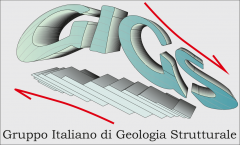Car* collegh*
su invito del Prof. Luca Pandolfi si segnala che domani, giovedì 28 maggio alle ore 14 la Prof.ssa Francesca Meneghini terrà un webinar dal titolo:
"Unlocking the secrets of slow slip events: the role of lithological and geometric heterogeneity of the subducting plate"
Il webinar può essere seguito tramite piattaforma Microsoft Teams o tramite diretta YouTube, mediante link presenti nella locandina sottostante.
Cordiali Saluti,
La segreteria GIGS
Locandina
Unlocking the secrets of slow slip events: the role of lithological and geometric heterogeneity of the subducting plate
Prof.ssa Francesca Meneghini
Abstract : The shallow portion of subduction thrust faults, between the trench and the seismogenic zone, can slip in a variety of modes, including steady creep, slow-slip events (SSEs), afterslip,and coseismic slip. Slow slip events (SSEs) accommodate a significant proportion of tectonic plate motion at subduction zones, however, little is known about how the nature of these shallow regions control the way displacement is hosted, thus preventing estimates of potential earthquake magnitude and tsunami forecasts. The shallow depth (<2 km) of well-documented SSEs at the Hikurangi subduction zone offshore New Zealand offers a unique opportunity to link geophysical imaging of the subduction zone with direct access to incoming material that represents the megathrust fault rocks hosting both slow slip and tsunami earthquakes. International Ocean Discovery Program Expedition 375 sampled this incoming material before it is entrained immediately down-dip along the shallow plate interface. With this seminar, mainly devoted to graduate students, I will show how we have recostructed the lithostratigraphy and the sedimentation system of the lower plate, by combining geophysical data and core observations, to show a lithologically heterogeneous lower plate, with highly variable physical properties, entering the SSE source region. The working hypothesis is that SSEs and associated slow earthquake phenomena might be facilitated by lithological, mechanical, and frictional heterogeneity within the fault zone, enhanced by geometric complexity associated with subduction of rough crust.
Webinar - Prof.ssa Francesca Meneghini - 'Unlocking the secrets of slow slip events: the role of lithological and geometric heterogeneity of the subducting plate'
-

